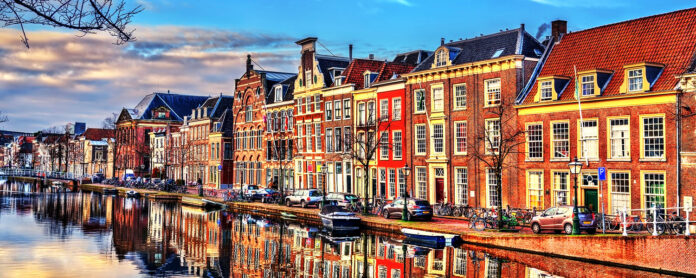The history of the Netherlands, also referred to as Nederland in the Dutch language, is an intricate and extensive narrative that encompasses numerous millennia. From its initial stages as an amalgamation of tribes during the Roman era to its present status as a prosperous and contemporary European nation, the Netherlands has exerted a substantial influence in shaping the trajectory of global history. Within this essay, we shall delve into the pivotal events, notable individuals, and transformative advancements that have delineated the identity of this nation throughout the preceding centuries.
Early Settlement and Roman Influence (1st Century BC – 5th Century AD)
From the 1st century BC to the 5th century AD, the Netherlands was home to various Germanic tribes, each with their own unique cultures and loosely connected under tribal confederations. The Roman Empire began to exert its influence in the region during the 1st century BC, with Julius Caesar’s forces entering the area. Over time, the Romans expanded their territories and established military bases and settlements, leading to the Romanization of the local population. This period also saw the development of several urban centers, such as Nijmegen, Utrecht, and Maastricht, which served as important administrative and economic hubs, promoting trade and cultural exchange.

The construction of an extensive network of roads by the Romans connected various parts of the region, facilitating trade and communication and contributing to the development of the area.
The presence of the Romans introduced elements of their culture, such as architecture, language, and religion. The local population embraced Roman architectural styles, and Latin became the language used for administration and education.
Despite the influence of the Romans, the Germanic tribes in the area maintained their distinct identities. The Batavi, Frisii, and other tribes coexisted with the Roman administration, sometimes cooperating and at other times conflicting.
In the 4th and 5th centuries AD, the Roman Empire faced external pressures, including invasions by Germanic tribes and internal political instability. Around 410 AD, which is traditionally considered the date of the sack of Rome by the Visigoths, Roman authority in the Netherlands began to crumble. This resulted in a period of regional fragmentation and the gradual emergence of medieval kingdoms and territories.
Middle Ages and the Rise of Trade (5th Century – 16th Century)
Following the decline of the Roman Empire, the region became part of the Frankish Empire. Christianity spread during this period, with influential figures such as Saint Willibrord converting the population. In the 9th and 10th centuries, the coastal areas of the region were frequently subjected to Viking attacks.
During the High Middle Ages, the Netherlands began to emerge as a collection of counties and duchies. The 12th century witnessed the construction of dikes and the commencement of a relentless battle against the sea, a struggle that would persist for centuries. Trade assumed increasing importance during this era, and towns such as Bruges and Ghent prospered, forming an integral part of the Hanseatic League.
The Dutch Golden Age (17th Century)
The 17th century is commonly referred to as the Dutch Golden Age. The Netherlands achieved independence from Spanish rule following the Eighty Years’ War (1568-1648). This period witnessed tremendous economic, cultural, and scientific growth. Dutch ships traversed the globe, establishing trade routes and colonies in Asia, Africa, and the Americas.
Art and culture flourished during this epoch, with renowned painters such as Rembrandt van Rijn and Johannes Vermeer producing masterpieces. Scientific advancements were made by figures such as Antonie van Leeuwenhoek, who made significant contributions to the field of microbiology.

The 18th century witnessed the decline of Dutch economic and political prowess, as the nation was plagued by wars and internal conflicts. In 1795, the French Revolutionary Army invaded and established the Batavian Republic, which became a subordinate state of France. Subsequently, under the rule of Napoleon Bonaparte, the Netherlands was assimilated into the French Empire.
Decline and Napoleonic Era (18th Century – Early 19th Century)
The 19th century brought about significant transformations. Following Napoleon’s defeat in 1815, the Congress of Vienna amalgamated the northern and southern regions of the Netherlands, forming the United Kingdom of the Netherlands. However, cultural and political disparities eventually led to the Belgian Revolution in 1830, resulting in the southern provinces gaining independence as Belgium.
Moreover, the 19th century witnessed a rapid surge in industrialization and modernization. The construction of canals and railways facilitated trade and communication, thereby fostering economic growth. Nevertheless, the Dutch colonial empire experienced a decline, with Indonesia remaining as one of the few remaining colonies.
Post-World War II Recovery and European Integration (1945-1960s)
Following the conclusion of World War II, the Netherlands underwent a period of reconstruction and economic revitalization. The 1950s and 1960s marked a significant era of social and cultural transformation, as traditional values gave way to progressive ideals. The 1950s witnessed a surge in industrialization and urbanization, while the discovery of natural gas in the 1960s further bolstered the economy, leading to increased prosperity and industrial growth.
Moreover, during the 1950s, the Netherlands actively participated in the formation of the European Coal and Steel Community (ECSC) and the European Economic Community (EEC). These precursor organizations to the European Union aimed to promote economic cooperation and prevent future wars by integrating European economies. The Netherlands played a pivotal role in these initiatives, laying the foundation for its current position within the European Union.
Cultural Renaissance and Social Progress (1960s-1970s)
The 1960s and 1970s witnessed a cultural renaissance in the Netherlands, as the country became a hub for innovative art, music, and design. The emergence of Provo, a counterculture movement in, advocated for societal and political change through peaceful means. This period also saw a rise in environmental awareness, leading to policies promoting ecological sustainability.
Social progress was a key focus during this time, as the Netherlands became a trailblazer in implementing progressive laws on issues such as abortion, euthanasia, and LGBTQ+ rights. The 1970s saw the decriminalization of homosexuality and the establishment of centers to provide sexual health education and services.
Immigration and Multicultural Society (Late 20th Century)
During the latter half of the 20th century, the Netherlands experienced a substantial influx of immigrants. Many of these individuals originated from former Dutch colonies, including Indonesia, Suriname, and the Netherlands Antilles, thereby enriching the nation’s multicultural tapestry. The Dutch government actively promoted and supported multiculturalism, fostering a society that celebrated diversity.
Nevertheless, the advent of multiculturalism also presented certain challenges. Occasional tensions emerged between different cultural and religious groups, prompting discussions regarding integration and social cohesion. The Netherlands adeptly navigated these challenges, striving to create an inclusive society that upholds individual freedoms while simultaneously promoting unity.
Economic Challenges and Globalization (1990s-2000s)
The 1990s and 2000s ushered in a period of economic challenges for the Netherlands. The country faced economic recessions and engaged in debates concerning social welfare reform. Despite these obstacles, the nation demonstrated resilience and continued to prosper economically. Notably, the financial sector played a pivotal role in the Dutch economy, with Amsterdam emerging as a prominent international financial center.
Globalization exerted a profound influence on Dutch society as well. The Netherlands assumed the role of a global hub for international trade and investment. Dutch companies expanded their presence on the global stage, thereby contributing to the nation’s economic growth. Concurrently, the Netherlands remained committed to advocating for human rights, environmental conservation, and international peace initiatives.
21st Century Challenges and Innovations (2000s-Present)
During the 21st century, the Netherlands encountered a series of novel challenges, encompassing environmental sustainability, climate change, and cyber security. In response, the Dutch government undertook pioneering measures to address these concerns, allocating resources towards renewable energy initiatives, fostering the adoption of sustainable transportation methods, and advocating for the implementation of digital security protocols.





